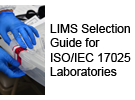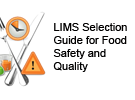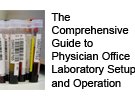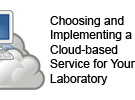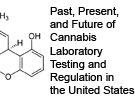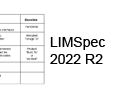Difference between revisions of "Journal:The need for informatics to support forensic pathology and death investigation"
Shawndouglas (talk | contribs) (Added content. Saving and adding more.) |
Shawndouglas (talk | contribs) (Added content. Saving and adding more.) |
||
| Line 69: | Line 69: | ||
===Death certification=== | ===Death certification=== | ||
The collection and compilation of the cause of death statements from death certificates have long been used by public health for epidemiology studies, disease surveillance, and determining where to focus public health resources. Unfortunately, the causes of death on these certificates are incorrect as much as half of the time. This is true even for common causes of death such as cardiovascular disease and cancer. Common errors include incorrect causes of death, nonspecific causes of death, and the inclusion of irrelevant diseases as contributing to death.<ref name="CambridgeTheAcc10">{{cite journal |title=The accuracy of death certificate completion in a suburban community |journal=The American Journal of Forensic Medicine and Pathology |author=Cambridge, B.; Cina, S.J. |volume=31 |issue=3 |pages=232–235 |year=2010 |doi=10.1097/PAF.0b013e3181e5e0e2 |pmid=20512028}}</ref><ref name="SnyderRed14">{{cite journal |title=Redistribution of heart failure as the cause of death: the Atherosclerosis Risk in Communities Study |journal=Population Health Metrics |author=Snyder, M.L.; Love, S.A.; Sorlie, P.D. et al. |volume=12 |issue=1 |pages=10 |year=2014 |doi=10.1186/1478-7954-12-10 |pmid=24716810 |pmc=PMC4113199}}</ref><ref name="GermanTheAcc11">{{cite journal |title=The accuracy of cancer mortality statistics based on death certificates in the United States |journal=Population Health Metrics |author=German, R.R.; Fink, A.K.; Heron, M. et al. |volume=35 |issue=2 |pages=126–131 |year=2011 |doi=10.1016/j.canep.2010.09.005 |pmid=20952269}}</ref> | The collection and compilation of the cause of death statements from death certificates have long been used by public health for epidemiology studies, disease surveillance, and determining where to focus public health resources. Unfortunately, the causes of death on these certificates are incorrect as much as half of the time. This is true even for common causes of death such as cardiovascular disease and cancer. Common errors include incorrect causes of death, nonspecific causes of death, and the inclusion of irrelevant diseases as contributing to death.<ref name="CambridgeTheAcc10">{{cite journal |title=The accuracy of death certificate completion in a suburban community |journal=The American Journal of Forensic Medicine and Pathology |author=Cambridge, B.; Cina, S.J. |volume=31 |issue=3 |pages=232–235 |year=2010 |doi=10.1097/PAF.0b013e3181e5e0e2 |pmid=20512028}}</ref><ref name="SnyderRed14">{{cite journal |title=Redistribution of heart failure as the cause of death: the Atherosclerosis Risk in Communities Study |journal=Population Health Metrics |author=Snyder, M.L.; Love, S.A.; Sorlie, P.D. et al. |volume=12 |issue=1 |pages=10 |year=2014 |doi=10.1186/1478-7954-12-10 |pmid=24716810 |pmc=PMC4113199}}</ref><ref name="GermanTheAcc11">{{cite journal |title=The accuracy of cancer mortality statistics based on death certificates in the United States |journal=Population Health Metrics |author=German, R.R.; Fink, A.K.; Heron, M. et al. |volume=35 |issue=2 |pages=126–131 |year=2011 |doi=10.1016/j.canep.2010.09.005 |pmid=20952269}}</ref> | ||
Forensic pathologists provide approximately 20% of the death certificates in the United States.<ref name="ParrishAss95">{{cite book |chapter=Assessing and improving the quality of data from medical examiners and coroners |title=Proceedings of the International Collaborative Effort on Injury Statistics |author=Parrish, Gib |editor=Centers for Disease Control |pages=25-1–25-10 |year=1995 |url=http://www.cdc.gov/nchs/data/ice/ice95v1/ice_i.pdf |format=PDF}}</ref> As they are specifically trained in the proper completion of death certificates, the accuracy of information provided is greatly increased as long as a full autopsy had been performed. However, due to limited financial and logistical resources in most DI offices, many natural deaths and a significant percentage of noncriminal violent deaths may not be autopsied. It has been well documented that forensic pathologists produce a significant number of errors in death certification when external examinations are performed instead of an autopsy.<ref name="AsnaesUn80">{{cite journal |title=Uncertainty of determining mode of death in medicolegal material without autopsy--A systematic autopsy study |journal=Forensic Science International |author=Asnaes, S.; Paaske, F. |volume=15 |issue=1 |pages=3–17 |year=1980 |doi=10.1016/0379-0738(80)90190-5 |pmid=7353810}}</ref><ref name="NashelskyAcc03">{{cite journal |title=Accuracy of cause of death determination without forensic autopsy examination |journal=The American Journal of Forensic Medicine and Pathology |author=Nashelsky, M.B.; Lawrence, C.H. |volume=24 |issue=4 |pages=313–319 |year=2003 |pmid=14634467}}</ref> | |||
Death certificate information is not only used by local, state and national public health departments to help set public health initiatives, but is also used by other agencies reviewing deaths from specific causes. The United States Department of Transportation studies transportation-related deaths through their Fatality Analysis Reporting System, and this has resulted in many improvements in the designs of motor vehicles and roadways. Similarly, the United States Department of Labor's Census of Fatal Occupational Injuries and the National Institute for Occupational Safety and Health's Traumatic Occupational Injuries Research and Prevention Program have effectively used death certificate data to improve workplace safety.<ref name="HanzlickMed06">{{cite journal |title=Medical examiners, coroners, and public health: a review and update |journal=Archives of Pathology & Laboratory Medicine |author=Hanzlick, R. |volume=130 |issue=9 |pages=1274–1282 |year=2006 |pmid=16948511}}</ref> | |||
===Medical Examiners and Coroners Alert Project=== | |||
The United States Consumer Product Safety Commission's (CPSC) Medical Examiners and Coroners Alert Project (MECAP) was created in 1976 as a quick alert system to report deaths where consumer products played a significant role in the death. Excluded from MECAP are deaths involving automobiles (but not off-road vehicles such as All-Terrain Vehicles), firearms (except air rifles and BB guns), foods, cosmetics, medical devices, aircraft, boats and boating equipment, and products used solely in industrial or commercial environments. There have been over 9,000 "valuable cases" reported that resulted in product recalls or product standards development. The CPSC's website provides detailed information regarding, which deaths should be reported. The program is voluntary and requires the medical examiner or coroner to proactively identify potential cases and take the time to report them. Reports can be accepted by phone, mail, fax or through a linked website.<ref name="DirectorateMed">{{cite web |url=http://www.cpsc.gov//Global/Research-and-Statistics/MECAP/MECAP%20News%20-%20General%20Information.pdf |format=PDF |title=Medical Examiners and Coroners Alert Project |author=Directorate for Epidemiology |publisher=U.S. Consumer Product Safety Commission |work=MECAP News |accessdate=30 December 2014}}</ref> | |||
===Medical Examiner and Coroner Information Sharing Program=== | |||
The Medical Examiner and Coroner Information Sharing Program (MECISP) was created by the Centers for Disease Control and Prevention in 1986. This was envisioned as a national system to collect and analyze information on medical examiner and coroner deaths to enable public health to quickly identify and understand the causes of sudden and unexpected deaths, leading to strategies to reduce mortality.<ref name="Medical89">{{cite journal |title=Medical examiner/coroner information-sharing program |journal=The American Journal of Forensic Medicine and Pathology |volume=10 |issue=1 |pages=88–89 |year=1989 |pmid=2539009}}</ref> As the first decade of data collection contained data in the many different formats used by the offices voluntarily contributing to the program, MECISP set a goal of standardizing data collection by creating guidelines for creating forensic data management programs and a standardized DI data set.<ref name="HanzlickCenters97">{{cite journal |title=Centers for Disease Control and Prevention's Medical Examiner/Coroner Information Sharing Program (MecISP) |journal=Journal of Forensic Sciences |author=Hanzlick, R. |volume=42 |issue=3 |pages=531–532 |year=1997 |url=https://www.ncjrs.gov/App/Publications/abstract.aspx?ID=172060}}</ref> Despite some success, the MECISP program was essentially defunded by the mid-2000's and is no longer functional. | |||
===National Violent Death Reporting System=== | |||
The National Violent Death Reporting System (NVDRS) is another program created by the Centers for Disease Control and Prevention in 2002 to collect and study the causes of homicides and suicides. The premise is that all these deaths are potentially preventable and that comprehensive data collection will facilitate the creation of violence prevention strategies. NVDRS is a state-based system designed to combine data from multiple sources (death certificates, medical examiner and coroner reports, law enforcement reports, and crime laboratories) into a single searchable database. Initially deployed in 16 states, it is now collecting data from 32 states with the ultimate goal of covering the entire Unites States. In 2013 NVDRS went to a web-based system for easy accessibility to the data. The program has had many successes in studying deaths in children due to maltreatment, suicides among soldiers, intimate partner homicides, elderly suicides and geographic distributions of violence.<ref name="CDCInj14">{{cite web |url=http://www.cdc.gov/violenceprevention/nvdrs/ |title=National Violent Death Reporting System |publisher=Centers for Disease Control and Prevention |date=08 December 2014 |accessdate=30 December 2014}}</ref><ref name="KlevensChild10">{{cite journal |title=Child maltreatment fatalities in children under 5: Findings from the National Violence Death Reporting System |journal=Child Abuse & Neglect |author=Klevens, J.; Leeb, R.T. |volume=34 |issue=4 |pages=262–266 |year=2010 |doi=10.1016/j.chiabu.2009.07.005 |pmid=20304491}}</ref><ref name="SmithInt14">{{cite journal |title=Intimate partner homicide and corollary victims in 16 states: National Violent Death Reporting System, 2003-2009 |journal=American Journal of Public Health |author=Smith, S.G.; Fowler, K.A.; Niolon, P.H. |volume=104 |issue=3 |pages=461–466 |year=2014 |doi=10.2105/AJPH.2013.301582 |pmid=24432943}}</ref><ref name="ParksSurv14">{{cite journal |title=Surveillance for Violent Deaths — National Violent Death Reporting System, 16 States, 2010 |journal=Morbidity and Mortality Weekly Report: Surveillance Summaries |author=Parks, S.E.; Johnson, L.L.; McDaniel, D.D.; Gladden, M. |volume=63 |issue=SS01 |pages=461–466 |year=2014 |url=http://www.cdc.gov/mmwr/preview/mmwrhtml/ss6301a1.htm}}</ref> | |||
===National Missing and Unidentified Persons System=== | |||
The issues of missing persons and unidentified human remains have been described as a silent mass disaster. At any given time, there are over 100,000 active missing persons cases and over 40,000 unidentified human remains in the United States. Historically there have been multiple databases at state and federal levels containing a combination of unique and overlapping information attempting to address the problem, but creating a logistical nightmare for law enforcement agencies and medical examiners to match missing persons with unidentified remains.<ref name="RitterMiss07">{{cite journal |title=Missing persons and unidentified remains: The nation′s silent mass disaster |journal=National Institute of Justice Journal |author=Ritter, N. |issue=256 |year=2007 |url=http://www.nij.gov/journals/256/pages/missing-persons.aspx}}</ref> | |||
In response, the United States Department of Justice created the National Missing and Unidentified Persons System (NamUs). NamUs has three main databases: a missing persons database in which families or law enforcement may enter information regarding missing persons and follow cases; an unidentified persons database where medical examiners and coroners may enter information on unidentified persons and the general public can search; and an unclaimed persons database for persons who have been identified but where family has not been found. The missing and unidentified person's databases interact to match information when entered into either system. As of October 2014, NamUs has resolved approximately 9000 cases of missing or unidentified persons.<ref name="NamUsHome">{{cite web |url=http://www.namus.gov/index.htm |title=National Missing and Unidentified Persons System |author=Office of Justice Programs |publisher=United States Department of Justice |accessdate=30 December 2014}}</ref> | |||
==References== | ==References== | ||
Revision as of 20:10, 28 January 2016
| Full article title | The need for informatics to support forensic pathology and death investigation |
|---|---|
| Journal | Journal of Pathology Informatics |
| Author(s) | Levy, Bruce |
| Author affiliation(s) | University of Illinois at Chicago |
| Primary contact | Email: http://www.jpathinformatics.org (Requires login) |
| Year published | 2015 |
| Volume and issue | 6 |
| Page(s) | 32 |
| DOI | 10.4103/2153-3539.158907 |
| ISSN | 2045-2322 |
| Distribution license | Creative Commons Attribution-NonCommercial-ShareAlike 3.0 Unported |
| Website | http://www.jpathinformatics.org |
| Download | http://www.jpathinformatics.org/temp/JPatholInform6132-5990369_163823.pdf (PDF) |
|
|
This article should not be considered complete until this message box has been removed. This is a work in progress. |
Abstract
As a result of their practice of medicine, forensic pathologists create a wealth of data regarding the causes of and reasons for sudden, unexpected or violent deaths. This data have been effectively used to protect the health and safety of the general public in a variety of ways despite current and historical limitations. These limitations include the lack of data standards between the thousands of death investigation (DI) systems in the United States, rudimentary electronic information systems for DI, and the lack of effective communications and interfaces between these systems. Collaboration between forensic pathology and clinical informatics is required to address these shortcomings and a path forward has been proposed that will enable forensic pathology to maximize its effectiveness by providing timely and actionable information to public health and public safety agencies.
Keywords: Clinical informatics, death investigation, forensic pathology, public health, public safety
Introduction
Clinical Informatics (CI) and Forensic Pathology would appear to be two subspecialties of medicine with little in common, as many equate informatics with the management of electronic medical records and forensics with the "criminal" investigation of homicides. These commonly held beliefs regarding forensics and informatics are simplistic and woefully incomplete. In reality, both fields are much broader, and there are opportunities for integration between forensics and informatics. Collaboration involving the expertise of the forensic pathologist in medicolegal death investigation (DI) and the skills of the clinical informatician to transform data into information can lead to the development of processes and systems that will better protect the health and safety of the public in an era of expanding threats from infectious disease, violent crime and terrorism.
What is clinical informatics?
Clinical Informatics is a newly recognized subspecialty, with the first board examinations and certifications in 2013 and establishment of Accreditation Council for Graduate Medical Education accredited fellowships starting in 2014. CI is defined as "the subspecialty of all medical specialties that transforms health care by analyzing, implementing, and evaluating information and communication systems to improve patient care, enhance access to care, advance individual and population health outcomes, and strengthen the clinician-patient relationship."[1] CI is commonly confused with Information Technology (IT), yet there is a distinct difference between these two fields. IT emphasizes the tools that are used for data manipulation while not being overly concerned with the data content. In contrast, CI's primary focus is on the data and considers IT as only one of many tools at its disposal.
There are two subdomains within the broad field of CI that are most relevant to forensics: Pathology informatics (PI) and Public health informatics.
Pathology Informatics is "the study and management of information, information systems, and processes in Pathology."[2] This "subspecialty" of Pathology has grown to involve much more than the management of the huge volumes of data generated by anatomic pathology and the clinical laboratory. PI is involved with the entire testing process from the ordering of the test through presentation and interpretation of the results; in other words, the preanalytic, analytic and postanalytic phases of laboratory testing.[3]
Public health informatics is "the systematic application of information, computer science and technology to public health practice, research, and learning."[4] Public health is focused on populations instead of individuals, prevention instead of treatment of disease, and government agencies instead of health care systems.[5] Public health systems work at local, state, national and global levels to both prevent morbidity and mortality utilizing multiple modalities and to address emergent situations such as infectious disease outbreaks when they occur.
What is forensic pathology and medicine?
Forensic pathology is a subspecialty of [[pathology] that concerns itself with the investigation of sudden, unexpected or violent deaths. While only formally recognized since the middle of the 20th Century, the origins of forensic pathology date back many centuries.[6] The major responsibility of the forensic pathologist is to determine the cause and manner of death for persons that fall under their jurisdiction. The forensic pathologist accomplishes this goal by correlating the data collected through conducting a death scene investigation, performing an autopsy, and ordering a variety of additional laboratory tests such as histology, toxicology, and microbiology. Forensic medicine is also involved with the examination and collection of evidence from living persons who are the victims of assault. The most common example of this in the United States is the examination of victims of sexual assault.[7]
There are two main DI systems in the United States, coroners and medical examiners. Both coroners and medical examiners are responsible for investigating sudden, unexpected or violent deaths and making rulings on the cause and manner of the death. Coroners represent an older system that was brought to the United States from England. Coroners are mostly elected officials with no specific training in DI or forensics. Medical examiners are an American system created about a century ago.[6] Medical examiners are all physicians (almost all have formal training in forensic pathology) and are appointed government officials.
Data collection in forensic pathology
As a result of their work, forensic health care professionals gather a large quantity of textual and image data about their patients. This data are not limited to histories, physical examination findings and laboratory results that parallel those collected in other fields of medicine, but also include data gathered at the scene of death and from law enforcement agencies investigating the death. This data are critical in assisting the forensic pathologist in determining the cause and manner of death. Frequently it is the investigative data from the scene instead of the physical findings of the autopsy that allows the forensic pathologist to distinguish an accident from a homicide or suicide.
This data have been historically collected in hard copy formats. While there has been progress toward collecting data in electronic formats in recent years, in 2011 approximately 18% of DI offices had no electronic case management system. Over half of the offices with electronic systems have idiosyncratic homegrown databases, many of them created in simple spreadsheet or database programs. Different data types (image, textual, laboratory results) are not often linked together by patient. For example, approximately 25% of both homegrown and vendor systems do not have direct access to scene and autopsy images.[8]
There are few interfaces between existing DI information systems and the information systems of law enforcement, supporting laboratories or public health. Toxicology laboratory results, which are critical in a large percentage of forensic deaths, are still submitted as paper requests and received as paper reports, instead of through a bidirectional interface between the laboratory and medical examiner information systems. Forensic pathologists manually enter cause of death data both into their own office's information system and their state's electronic death certificate. This represents both duplications of effort and a source for the increased incidence of transcription errors.
Solving this issue would appear to be simple, but is complicated by a variety of political, logistical and financial challenges.
There are approximately 2,000 distinct DI systems in the United States. In 2004, only sixteen states had a centralized statewide medical examiner system. The other states had a combination of county coroner and/or medical examiner systems. These county-based systems can represent large cities, medium suburban areas, or small rural communities. Over 80% of the DI systems are county coroner systems in small to medium-sized jurisdictions. Resources are heavily concentrated in a few large systems. Most offices serving jurisdictions of 25,000 persons or less have only one full-time equivalent and median annual operating budgets of under $20,000.[9]
This large number of DI systems of various sizes and with differing access to resources represents a challenge to consistent data collection. Larger DI offices with greater resources employ specially trained death investigators to systematically collect information regarding reported deaths, and are more likely to use electronic information systems to collect the information. Smaller offices typically rely on law enforcement, whose investigative focus is on the investigation of crime rather than death, and receive paper investigative reports that may or may not be scanned or integrated into an electronic system.
There are currently no standards regarding the structuring of data or interfaces for electronic DI databases. As a result, there is no effective way to transfer information between different agencies either in the same jurisdiction or between jurisdictions. This not only impedes efficient operations on a day-to-day basis, but also is crippling during multijurisdictional emergencies, such as mass fatality incidents or infectious disease epidemics, where the free flow of information is critical.
Despite well-documented issues regarding the lack of data standards and inconsistencies between DI offices there has been little political will to invest the resources to address these deficiencies. The 2009 National Academy of Sciences Report on Forensic Science recommended that DI offices should have case information databases that would enable trend analysis of deaths for public health and safety purposes and continuous quality improvement.[10] Yet there has been a little improvement or significant political will to provide funding or standards for DI offices since that time.[11]
Effective use of forensic death investigation data
There are numerous examples of how information generated as a result of the work of forensic pathologists has been utilized in meaningful ways.
Death certification
The collection and compilation of the cause of death statements from death certificates have long been used by public health for epidemiology studies, disease surveillance, and determining where to focus public health resources. Unfortunately, the causes of death on these certificates are incorrect as much as half of the time. This is true even for common causes of death such as cardiovascular disease and cancer. Common errors include incorrect causes of death, nonspecific causes of death, and the inclusion of irrelevant diseases as contributing to death.[12][13][14]
Forensic pathologists provide approximately 20% of the death certificates in the United States.[15] As they are specifically trained in the proper completion of death certificates, the accuracy of information provided is greatly increased as long as a full autopsy had been performed. However, due to limited financial and logistical resources in most DI offices, many natural deaths and a significant percentage of noncriminal violent deaths may not be autopsied. It has been well documented that forensic pathologists produce a significant number of errors in death certification when external examinations are performed instead of an autopsy.[16][17]
Death certificate information is not only used by local, state and national public health departments to help set public health initiatives, but is also used by other agencies reviewing deaths from specific causes. The United States Department of Transportation studies transportation-related deaths through their Fatality Analysis Reporting System, and this has resulted in many improvements in the designs of motor vehicles and roadways. Similarly, the United States Department of Labor's Census of Fatal Occupational Injuries and the National Institute for Occupational Safety and Health's Traumatic Occupational Injuries Research and Prevention Program have effectively used death certificate data to improve workplace safety.[18]
Medical Examiners and Coroners Alert Project
The United States Consumer Product Safety Commission's (CPSC) Medical Examiners and Coroners Alert Project (MECAP) was created in 1976 as a quick alert system to report deaths where consumer products played a significant role in the death. Excluded from MECAP are deaths involving automobiles (but not off-road vehicles such as All-Terrain Vehicles), firearms (except air rifles and BB guns), foods, cosmetics, medical devices, aircraft, boats and boating equipment, and products used solely in industrial or commercial environments. There have been over 9,000 "valuable cases" reported that resulted in product recalls or product standards development. The CPSC's website provides detailed information regarding, which deaths should be reported. The program is voluntary and requires the medical examiner or coroner to proactively identify potential cases and take the time to report them. Reports can be accepted by phone, mail, fax or through a linked website.[19]
Medical Examiner and Coroner Information Sharing Program
The Medical Examiner and Coroner Information Sharing Program (MECISP) was created by the Centers for Disease Control and Prevention in 1986. This was envisioned as a national system to collect and analyze information on medical examiner and coroner deaths to enable public health to quickly identify and understand the causes of sudden and unexpected deaths, leading to strategies to reduce mortality.[20] As the first decade of data collection contained data in the many different formats used by the offices voluntarily contributing to the program, MECISP set a goal of standardizing data collection by creating guidelines for creating forensic data management programs and a standardized DI data set.[21] Despite some success, the MECISP program was essentially defunded by the mid-2000's and is no longer functional.
National Violent Death Reporting System
The National Violent Death Reporting System (NVDRS) is another program created by the Centers for Disease Control and Prevention in 2002 to collect and study the causes of homicides and suicides. The premise is that all these deaths are potentially preventable and that comprehensive data collection will facilitate the creation of violence prevention strategies. NVDRS is a state-based system designed to combine data from multiple sources (death certificates, medical examiner and coroner reports, law enforcement reports, and crime laboratories) into a single searchable database. Initially deployed in 16 states, it is now collecting data from 32 states with the ultimate goal of covering the entire Unites States. In 2013 NVDRS went to a web-based system for easy accessibility to the data. The program has had many successes in studying deaths in children due to maltreatment, suicides among soldiers, intimate partner homicides, elderly suicides and geographic distributions of violence.[22][23][24][25]
National Missing and Unidentified Persons System
The issues of missing persons and unidentified human remains have been described as a silent mass disaster. At any given time, there are over 100,000 active missing persons cases and over 40,000 unidentified human remains in the United States. Historically there have been multiple databases at state and federal levels containing a combination of unique and overlapping information attempting to address the problem, but creating a logistical nightmare for law enforcement agencies and medical examiners to match missing persons with unidentified remains.[26]
In response, the United States Department of Justice created the National Missing and Unidentified Persons System (NamUs). NamUs has three main databases: a missing persons database in which families or law enforcement may enter information regarding missing persons and follow cases; an unidentified persons database where medical examiners and coroners may enter information on unidentified persons and the general public can search; and an unclaimed persons database for persons who have been identified but where family has not been found. The missing and unidentified person's databases interact to match information when entered into either system. As of October 2014, NamUs has resolved approximately 9000 cases of missing or unidentified persons.[27]
References
- ↑ Accreditation Council for Graduate Medical Education (3 February 2014). "ACGME Program Requirements for Graduate Medical Education in Clinical Informatics" (PDF). http://www.acgme.org/acgmeweb/Portals/0/PFAssets/ProgramRequirements/381_clinical_informatics_02032014.pdf. Retrieved 30 December 2014.
- ↑ Levy, B.P.; McClintock, D.S.; Lee, R.E. et al. (2012). "Different tracks for pathology informatics fellowship training: Experiences of and input from trainees in a large multisite fellowship program". Journal of Pathology Informatics 3: 30. doi:10.4103/2153-3539.100362. PMC PMC3445299. PMID 23024889. https://www.ncbi.nlm.nih.gov/pmc/articles/PMC3445299.
- ↑ McClintock, D.S.; Levy, B.P.; Lane, W.J. et al. (2012). "A core curriculum for clinical fellowship training in pathology informatics". Journal of Pathology Informatics 3: 31. doi:10.4103/2153-3539.100364. PMC PMC3445301. PMID 23024890. https://www.ncbi.nlm.nih.gov/pmc/articles/PMC3445301.
- ↑ Yasnoff, W.A.; O′Carroll, P.W.; Koo, D.; Linkins, R.W.; Kilbourne, E.M. (2000). "Public health informatics: Improving and transforming public health in the information age". Journal of Public Health Management and Practice 6 (6): 67–75. http://journals.lww.com/jphmp/Fulltext/2000/06060/Public_Health_Informatics__Improving_and.10.aspx.
- ↑ Magnuson, J.A.; O’Carroll, P.W. (2014). "Introduction to public health informatics". In Magnuson, J.A.; Fu Jr., P.C.. Public Health Informatics and Information Systems. pp. 3-18. doi:10.1007/978-1-4471-4237-9_1. ISBN 9781447142379.
- ↑ 6.0 6.1 Spitz, D.J. (2006). "History and development of forensic medicine and pathology". In Spitz, W.U.; Spitz, D.J.. Spitz and Fisher's Medicolegal Investigation of Death: Guidelines for the Application of Pathology to Crime Investigation. pp. 3-21. ISBN 9780398075446. https://books.google.com/books?id=-m_fb580Vx0C.
- ↑ U.S. Department of Justice Office on Violence Against Women (April 2013). "A National Protocol for Sexual Assault Medical Forensic Examinations" (PDF). U.S. Department of Justice. https://www.ncjrs.gov/pdffiles1/ovw/241903.pdf. Retrieved 30 December 2014.
- ↑ Levy, B.P. (2013). "Implementation and user satisfaction with forensic laboratory information systems in death investigation offices". The American Journal of Forensic Medicine and Pathology 34 (1): 63–67. doi:10.1097/PAF.0b013e31827ab5c6. PMID 23361076.
- ↑ U.S. Department of Justice Office of Justice Programs (June 2007). "Medical Examiners and Coroners' Offices, 2004" (PDF). U.S. Department of Justice. http://www.bjs.gov/content/pub/pdf/meco04.pdf. Retrieved 30 December 2014.
- ↑ Committee on Identifying the Needs of the Forensic Sciences Community (2009). "Medical examiner and coroner systems: Current and future needs". In National Research Council of the National Academies. Strengthening Forensic Science in the United States: A Path Forward. pp. 241–268. doi:10.17226/12589. ISBN 9780309131308.
- ↑ Thompson, A.C.; Secret, M.; Bergman, L.; Bartlett S. (31 January 2011). "The Real ‘CSI’: How America’s Patchwork System of Death Investigations Puts the Living at Risk". Pro Publica. Pro Publica, Inc. http://www.propublica.org/article/the-real-csi-americas-patchwork-system-of-death-investigation. Retrieved 30 December 2014.
- ↑ Cambridge, B.; Cina, S.J. (2010). "The accuracy of death certificate completion in a suburban community". The American Journal of Forensic Medicine and Pathology 31 (3): 232–235. doi:10.1097/PAF.0b013e3181e5e0e2. PMID 20512028.
- ↑ Snyder, M.L.; Love, S.A.; Sorlie, P.D. et al. (2014). "Redistribution of heart failure as the cause of death: the Atherosclerosis Risk in Communities Study". Population Health Metrics 12 (1): 10. doi:10.1186/1478-7954-12-10. PMC PMC4113199. PMID 24716810. https://www.ncbi.nlm.nih.gov/pmc/articles/PMC4113199.
- ↑ German, R.R.; Fink, A.K.; Heron, M. et al. (2011). "The accuracy of cancer mortality statistics based on death certificates in the United States". Population Health Metrics 35 (2): 126–131. doi:10.1016/j.canep.2010.09.005. PMID 20952269.
- ↑ Parrish, Gib (1995). "Assessing and improving the quality of data from medical examiners and coroners". In Centers for Disease Control (PDF). Proceedings of the International Collaborative Effort on Injury Statistics. pp. 25-1–25-10. http://www.cdc.gov/nchs/data/ice/ice95v1/ice_i.pdf.
- ↑ Asnaes, S.; Paaske, F. (1980). "Uncertainty of determining mode of death in medicolegal material without autopsy--A systematic autopsy study". Forensic Science International 15 (1): 3–17. doi:10.1016/0379-0738(80)90190-5. PMID 7353810.
- ↑ Nashelsky, M.B.; Lawrence, C.H. (2003). "Accuracy of cause of death determination without forensic autopsy examination". The American Journal of Forensic Medicine and Pathology 24 (4): 313–319. PMID 14634467.
- ↑ Hanzlick, R. (2006). "Medical examiners, coroners, and public health: a review and update". Archives of Pathology & Laboratory Medicine 130 (9): 1274–1282. PMID 16948511.
- ↑ Directorate for Epidemiology. "Medical Examiners and Coroners Alert Project" (PDF). MECAP News. U.S. Consumer Product Safety Commission. http://www.cpsc.gov//Global/Research-and-Statistics/MECAP/MECAP%20News%20-%20General%20Information.pdf. Retrieved 30 December 2014.
- ↑ "Medical examiner/coroner information-sharing program". The American Journal of Forensic Medicine and Pathology 10 (1): 88–89. 1989. PMID 2539009.
- ↑ Hanzlick, R. (1997). "Centers for Disease Control and Prevention's Medical Examiner/Coroner Information Sharing Program (MecISP)". Journal of Forensic Sciences 42 (3): 531–532. https://www.ncjrs.gov/App/Publications/abstract.aspx?ID=172060.
- ↑ "National Violent Death Reporting System". Centers for Disease Control and Prevention. 8 December 2014. http://www.cdc.gov/violenceprevention/nvdrs/. Retrieved 30 December 2014.
- ↑ Klevens, J.; Leeb, R.T. (2010). "Child maltreatment fatalities in children under 5: Findings from the National Violence Death Reporting System". Child Abuse & Neglect 34 (4): 262–266. doi:10.1016/j.chiabu.2009.07.005. PMID 20304491.
- ↑ Smith, S.G.; Fowler, K.A.; Niolon, P.H. (2014). "Intimate partner homicide and corollary victims in 16 states: National Violent Death Reporting System, 2003-2009". American Journal of Public Health 104 (3): 461–466. doi:10.2105/AJPH.2013.301582. PMID 24432943.
- ↑ Parks, S.E.; Johnson, L.L.; McDaniel, D.D.; Gladden, M. (2014). "Surveillance for Violent Deaths — National Violent Death Reporting System, 16 States, 2010". Morbidity and Mortality Weekly Report: Surveillance Summaries 63 (SS01): 461–466. http://www.cdc.gov/mmwr/preview/mmwrhtml/ss6301a1.htm.
- ↑ Ritter, N. (2007). "Missing persons and unidentified remains: The nation′s silent mass disaster". National Institute of Justice Journal (256). http://www.nij.gov/journals/256/pages/missing-persons.aspx.
- ↑ Office of Justice Programs. "National Missing and Unidentified Persons System". United States Department of Justice. http://www.namus.gov/index.htm. Retrieved 30 December 2014.
Notes
This presentation is faithful to the original, with only a few minor changes to presentation. In some cases important information was missing from the references, and that information was added. In Table 2, checkmarks and Xs were replaced with Ys and Ns. The "Methods" section has also been moved from the end to a more logical position before the Discussion and Conclusion.


